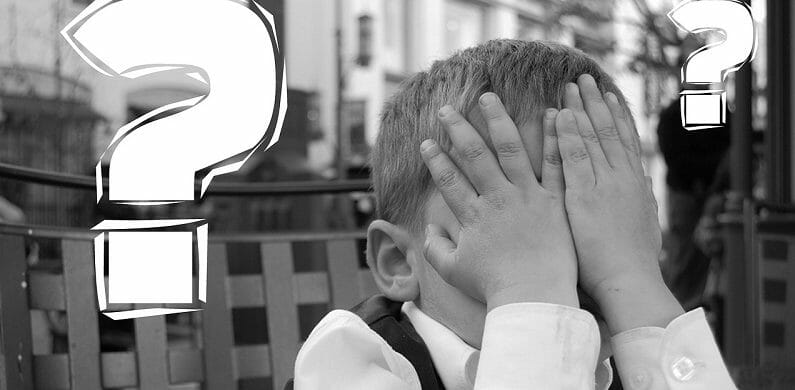Below is a list of the Top 10 Most Common Bankruptcy Questions. Please take the time to read through it as you may find it useful. DISCLAIMER: We are not lawyers and are not giving legal advice. Before filing bankruptcy, talk to a lawyer in your location.
1) Does Bankruptcy Clear Debt?
In general, bankruptcy clears out most unsecured debt. Unsecured means the loan is not backed up by a guarantor or asset. Unsecured debt can include medical bills, overdue utility payments, credit cards, personal loans, and certain contracts, like gym memberships. Secured debt includes purchases on a secured credit card and large purchases like homes and cars.
Federal student loans are unsecured but typically cannot be wiped out in bankruptcy. Child support, alimony, and most tax debt are also not included.
2) How Much Debt is Needed to File Bankruptcy?
For Chapter 7, there is no minimum amount of debt. It depends on your individual situation. The court will look at whether you are able to repay debt outside bankruptcy, if creditors are willing to work out a repayment agreement, and what types of debt you have.
For Chapter 13, you can not have more than $1,184,200 in secured debt or $394,725 in unsecured debt. These numbers are adjusted periodically.
3) Should I Declare Bankruptcy or Seek Debt Settlement?
This depends on your specific case. In debt settlement, you and your creditors agree on a lesser amount to be paid than what is owed. Bankruptcy erases most of your debt depending on what type of debt it is, and which bankruptcy you filed. Bankruptcy can also be very expensive, largely due to the legal fees. Not to mention, there is a pretty bad stigma that comes along with it that nobody wants to be associated with.
Both methods may negatively impact your credit score. Debt settlement is not a public record but missed payments could stay on your credit report up to seven years, while a bankruptcy is public record and can show up to 10 years. With debt settlement, you may be required to stop making credit card payments before the creditor will consider working with you. Once you have paid off the agreed upon (settled) amount, your credit report will show the account was paid off, but for less than what was originally due. As you pay off your debts and use any new credit carefully, your credit score should start to improve. Rebuilding your credit rating takes both the careful use of credit and on-time payments. With care, you could start to see improvements in a fairly short period of time.
Pacific Debt offers a FREEConsultation to anyone looking at debt settlement options. Our Debt Relief Program is designed to try to get you out of debt in two to four years.
4) How Often Can You File Bankruptcy?
As a general rule:
Chapter 7 then Chapter 7 – You must wait eight years from the date you filed the first case.
Chapter 13 then Chapter 13 – You can’t get another discharge for two years, but you can file a second as soon as the first case is closed.
Chapter 7 then Chapter 13 – Commonly referred to as a Chapter 20 bankruptcy. You must wait a minimum of four years.
Chapter 13 then Chapter 7 – You must wait up to six years from first filing date unless you have paid off all unsecured debts or made a “best effort” to repay at least 70%.
For more information on how often you can file a bankruptcy or more information on the bankruptcy basics, check out NationalBankruptcy.
5) What Happens When You File Bankruptcy?
In a Chapter 7 bankruptcy, your previous debts are usually wiped out, along with your good credit history. You have the opportunity to rebuild your credit. In Chapter 13, you repay your debts for a reduced amount over four to six years. In both cases, the bankruptcy will stay on your credit report for up to ten years.
6) Can You File Bankruptcy on Medical Bills?
Medical bills are considered unsecured debt and can be easily wiped out in most cases. In a Chapter 7 bankruptcy, you must first pass a means test. There Is no limit to the amount of medical debt.
In a Chapter 13 bankruptcy, your debt can’t exceed the debt limits. You repay the bills based on income and expenses, but usually not the full amount.
7) How Long Does a Bankruptcy Stay on a Credit Report?
A bankruptcy can stay on your credit report for up to ten years.
8) Can I be Approved for Credit Cards After Bankruptcy?
Yes. Depending on the credit card company, you may apply for both secured and unsecured cards. With a secured card, you must have a certain amount of money on hold with the credit card company to ensure the bill will be paid. You may have to meet fairly stringent requirements to apply for an unsecured credit card.
Are you wondering how much money you are spending on credit card interest? Our credit card calculator can help you figure out exactly how much money you’re paying on interest and principal each year.
9) Is Buying a House After Bankruptcy Possible?
Yes, within certain guidelines. After Chapter 7, you must wait two years for an FHA or VA loan, and four years for a conventional loan. After Chapter 13, the wait time is roughly halved. Often, you will have to show a 12-month consecutive record of on-time payments and have the court’s permission.
Check out our recently published article on How to buy a house with bad credit.
10) How Long Does It Take to File Bankruptcy?
It takes roughly three to six months to file and receive a discharge. In Chapter 13, the repayment time may take three to five years to finish paying existing debts.
Our Debt Specialists can help you explore your alternatives to bankruptcy, including
debt consolidation and debt settlement options.
✔ Accredited by Better Business Bureau with BBB A+ rating (4.93 rating and 1678 reviews)
✔ US News and World Reports and Bankrate ranked Pacific Debt Relief as one of “The Best Debt Relief Companies of 2024”
✔ 6.9 star rating by BestCompany.com (over 2379 client reviews)
✔ 4.8 star rating by TrustPilot based (over 1613 verified consumer reviews)
✔ ConsumerAffairs.com Accredited (over 544 verified reviews with an average rating of 5 stars)
✔ A Top 10 Rated Compan by TopTenReviews.com , ConsumersAdvocate.com and Top10debtconsolidation.com
✔ 4.6 star rating by Google (229 client reviews)
✔ 100% rating by SuperMoney (9 client reviews)
Reduce Your Credit Card Debt By Up to Half

BBB Reviews | 4.9/5.0 Rating









 Do Not Sell My Personal Information
Do Not Sell My Personal Information